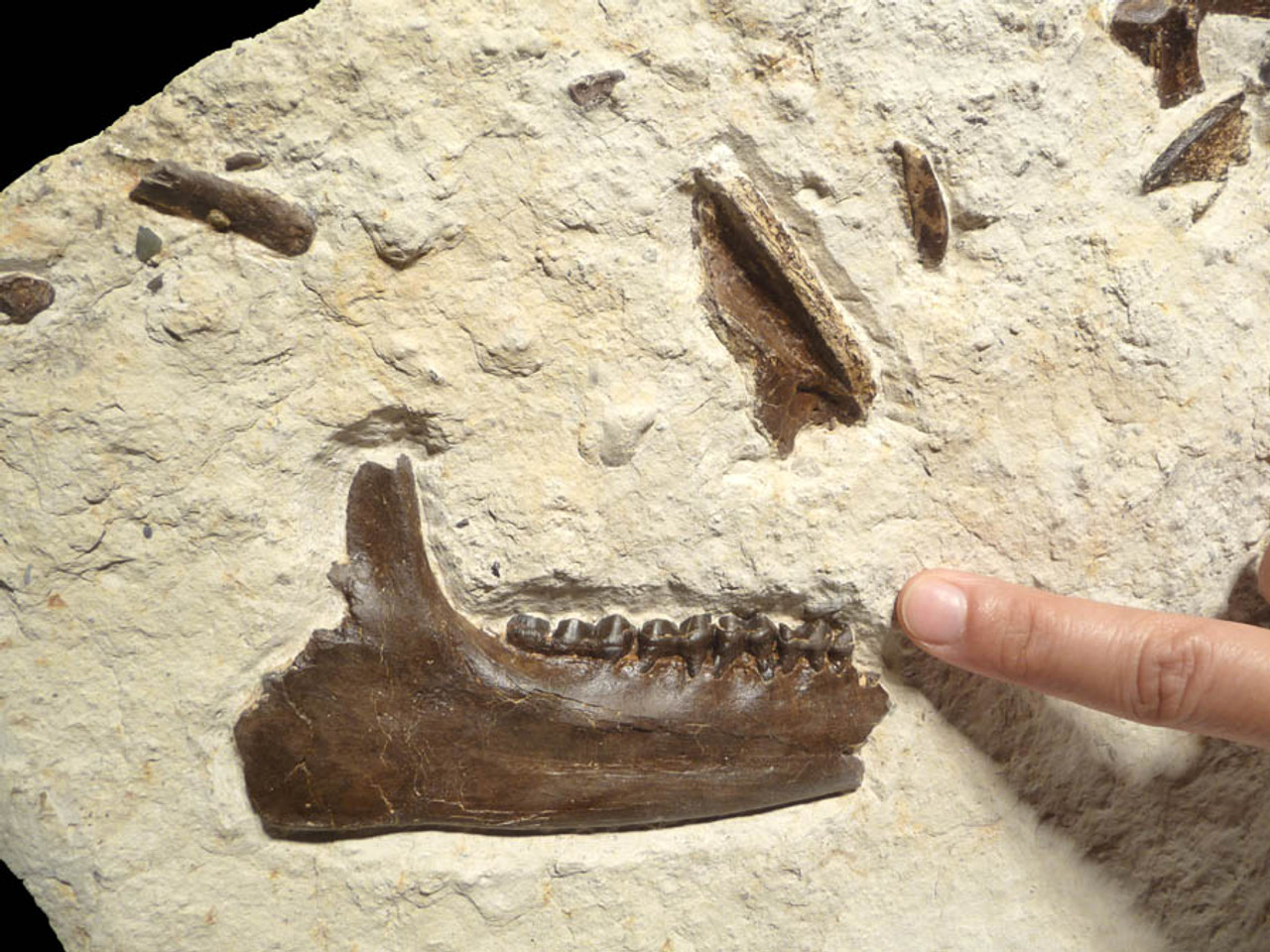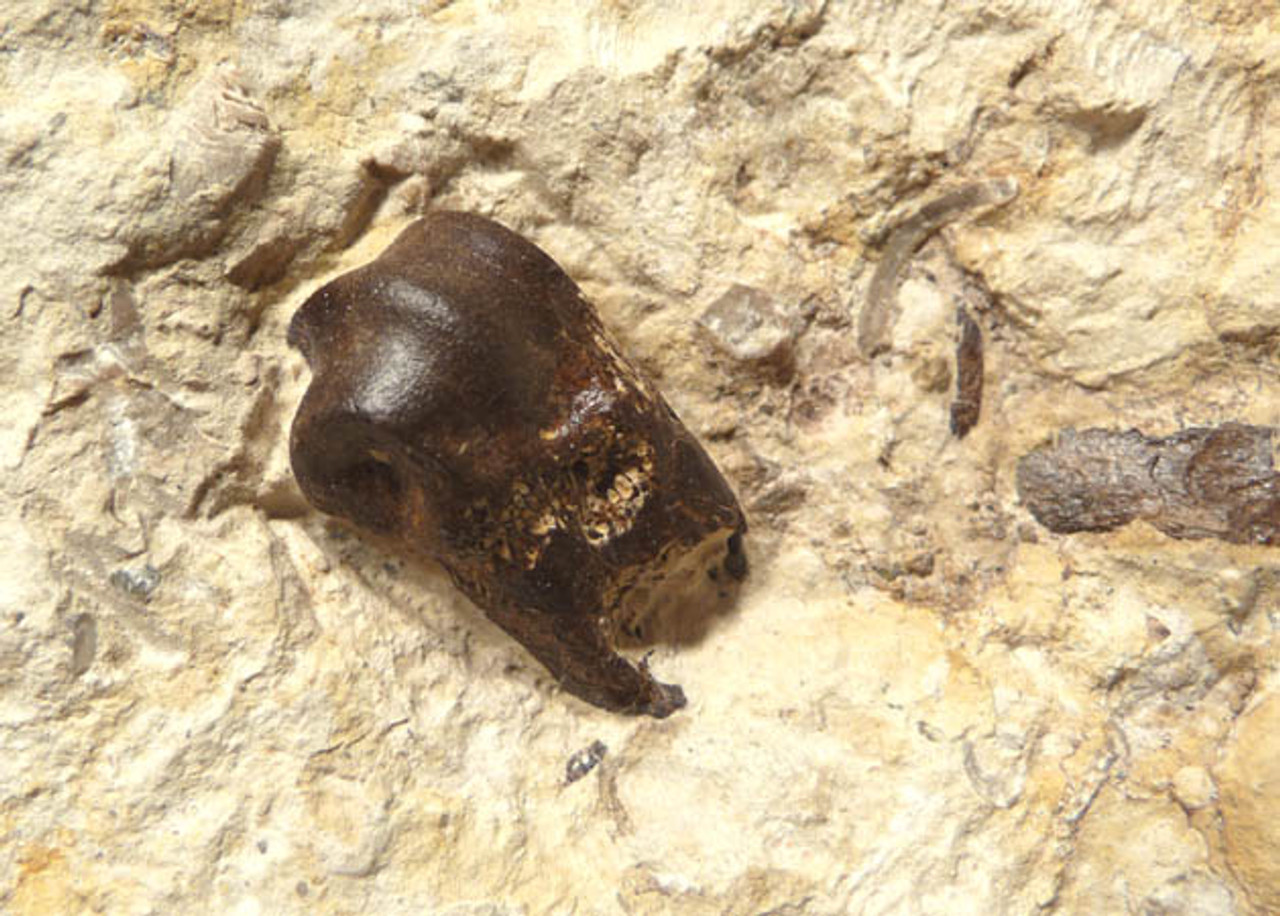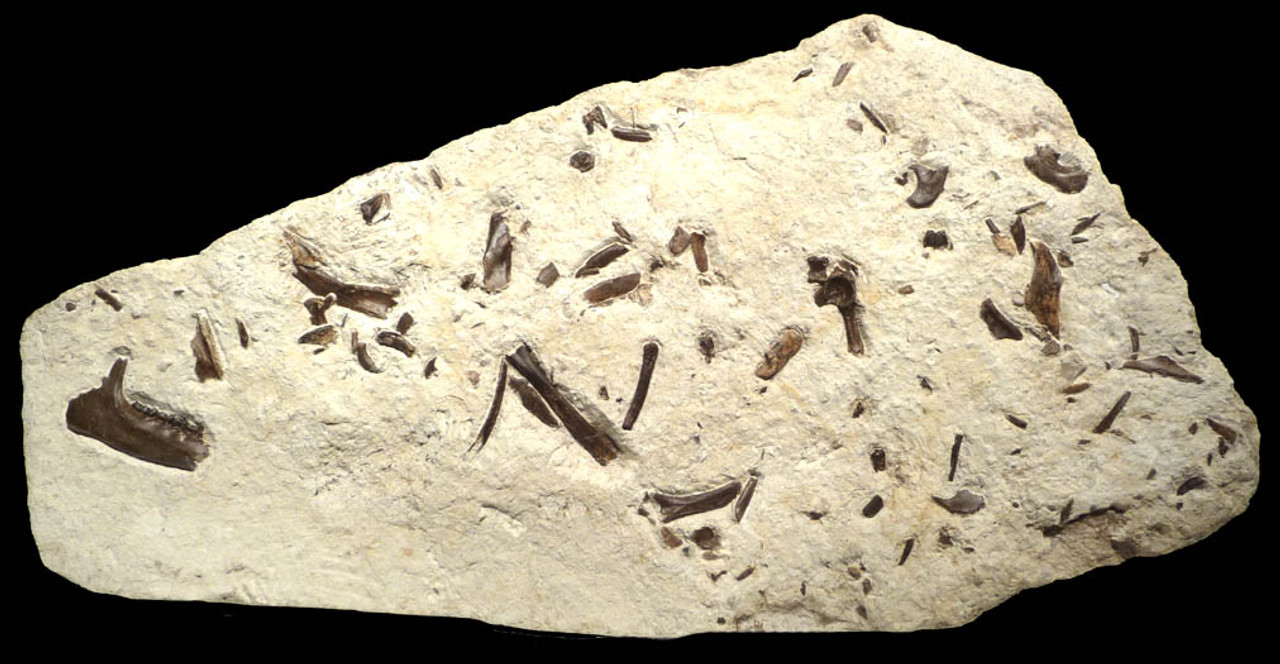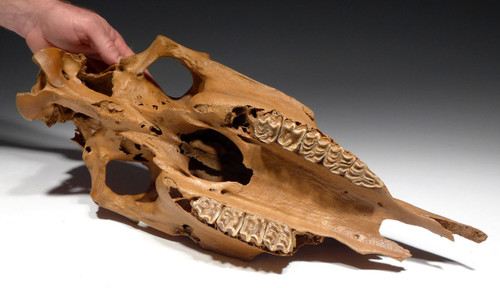Product Description
FREE SHIPPING IS FOR U.S. ADDRESSES ONLY. PLEASE CONTACT US TO PURCHASE THIS OUTSIDE THE U.S..
Primitive horse fossils are usually limited to isolated finds of teeth and some bones. These fossils are often from either the Pliocene or Miocene Periods. This is an extremely rare fossil of a primitive three-toed horse from BEFORE these periods. And rather than a single bone or tooth, it is a densely packed fossil bed of the prehistoric little primitive horse Plagiolophus. It dates to the Eocene Era which is the FIRST geologic period of the emergence of the horse! This specimen is an incredibly large UNBROKEN bone bed loaded with fossil bones, teeth and a mandible in pristine preservation. This is a spectacular exhibition-grade fossil appropriate for the finest museum collections. It could be a valuable example of Eocene mammalian evolution or a cornerstone specimen of horse evolution and early development. Its unusually large size and plate-like, flat nature make it easy to exhibit on a wall thereby not requiring any valuable floor display space.
This remarkable specimen was prepared by us in our lab. The matrix is UNBROKEN and completely original to the bones as quarried from the ground. THIS IS NOT A GROUND-UP ARTIFICIAL MATRIX-BED WITH INSERTED FOSSILS AS SO MANY FOSSIL PANEL MOUNTS ARE. For the fossil collecting purist and fanciers of extraordinarily rare fossils, this is THE specimen ready to exhibit. It could also be a breath-taking display specimen not just for a museum or fossil collector but for anyone who appreciates horses. A specimen like this would make a perfect feature display on the premises of a horse-breeder or equestrian estate. Most people do not realize that the earliest of primitive horses like this specimen was about the size of a modern fox and date back to 60 million years ago.
Numerous extremely well preserved and important fossils of this horse species can be found naturally associated together in this preserved bone bed. There is a large mandible with all the original molars still in place. There are also several other individual teeth from various jaw positions including incisors and molars with their full crown and root. There are portions of other mandibles and part of a maxilla also present. Numerous limb bones can be seen, as well. The natural dark espresso brown of the fossils contrasts exceptionally well with the light ivory white color of the original stone matrix. The edges of the slab even show embedded bones that have been sawn through during the extraction of this slab. The back side is ground flat and has been reinforced with epoxy for safe handling and display. This is a perfect specimen for wall display and all it needs are some custom brackets to hold it in place on any flat vertical surface. This is a one-of-a-kind specimen of both great scientific importance as well as exhibition visual appeal. It's a rare pleasure to be able to prepare and offer to our clients a piece that is equally at home in an important museum collection as well as being an aesthetic beauty for the private collector.
 US DOLLAR
US DOLLAR
 EURO
EURO
 AUSTRALIAN DOLLAR
AUSTRALIAN DOLLAR
 CANADIAN DOLLAR
CANADIAN DOLLAR
 POUND STERLING
POUND STERLING




























